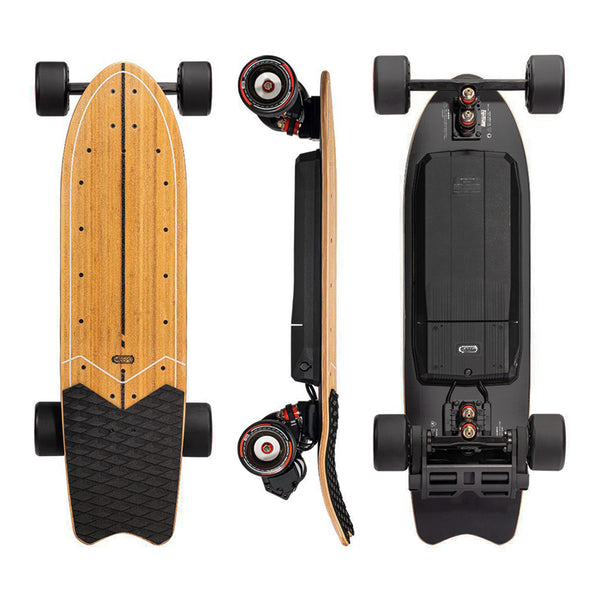Unleash the Thrill: Your Ultimate Guide to Mini Electric Skateboards!
In recent years, mini electric skateboards have surged in popularity, captivating riders of all ages. These compact marvels combine the thrill of skateboarding with the convenience of electric propulsion, making them an increasingly attractive option for urban commuters and recreational enthusiasts alike. One of the standout advantages of a mini electric skateboard is its portability; they are lightweight and easily fit into bags or can be carried under your arm. Furthermore, their ease of use allows even novice riders to experience the joy of gliding effortlessly without the steep learning curve associated with traditional skateboarding. This article aims to provide a comprehensive overview of mini electric skateboards, including key specifications to look for, practical usage tips, and general advice to enhance your riding experience.

Understanding Mini Electric Skateboards
Mini electric skateboards are compact versions of their larger counterparts, designed for ease of handling and portability. Typically, these boards are shorter in length—often ranging from 24 to 30 inches—and lighter, usually weighing between 10 to 15 pounds. This makes them ideal for navigating crowded city streets or taking on public transportation. Unlike traditional skateboards that rely solely on the rider's physical effort, mini electric skateboards come equipped with electric motors that assist with propulsion. Additionally, many feature advanced designs, such as a low-profile deck for enhanced stability and a wider stance for better balance. The combination of these characteristics makes mini electric skateboards an excellent choice for both casual riders and those looking to commute efficiently.
Specifications to Consider
When choosing a mini electric skateboard, several key specifications are crucial to consider in order to ensure a satisfying riding experience. Firstly, battery life is paramount; most boards offer a range of 5 to 15 miles on a single charge, which determines how far you can travel without needing to recharge. Additionally, the motor power—measured in watts—affects overall performance; look for boards with at least 250 to 600 watts for a good balance of speed and hill-climbing ability. Weight capacity also varies, typically ranging from 120 to 300 pounds, so it’s vital to select a board that accommodates your weight for safety and performance. Finally, consider the speed limits; most mini electric skateboards can reach speeds between 10 to 25 mph, and understanding this can help you choose a board that aligns with your riding style.
Usage Tips for New Riders
For beginners venturing into the world of mini electric skateboarding, a few practical tips can enhance their experience significantly. Begin by finding a comfortable stance—most riders prefer a shoulder-width position with their knees slightly bent for better balance. As you start riding, remember to keep your weight centered over the board; leaning too far forward or backward can lead to a loss of control. Braking techniques are also essential; many mini electric skateboards feature regenerative braking, which allows you to slow down smoothly by easing off the throttle. Don’t forget to wear protective gear, including a helmet and knee pads, to safeguard against potential falls. Lastly, familiarize yourself with local riding laws and regulations, as they can vary significantly and may impact where you can ride.
Maintenance and Care
Additionally, aesthetics are also essential. Avoid letting dirt and debris come in contact with the battery; this can deplete performance. Check and clean components regularly to ensure the lifespan of your mini electric skateboard. Keeping tires inflated, checking for loose bolts, and tightening screws will improve stability while riding, preventing slippage, vibrations, and tear. Regular maintenance not only enhances performance but also ensures safer riding for years to come.
Common Challenges and Solutions
Riders may face a few common challenges while using mini electric skateboards, but many of these can be easily managed with the right approach. One issue is battery management; to maximize battery life, always plan your route and avoid steep hills if possible, as these can drain the battery faster. If you find yourself frequently riding on rough terrain, consider upgrading your wheels to a more durable set designed to absorb shocks. Additionally, if you encounter handling difficulties, practice riding in open spaces to build your confidence and control over the skateboard. By being aware of these challenges and implementing simple solutions, you can enhance your overall riding experience.
Summary of Key Takeaways
In summary, mini electric skateboards offer an exciting and practical mode of transportation, blending the thrill of skateboarding with the convenience of electric mobility. Understanding the key specifications, learning how to ride safely, and maintaining your board are all vital components of a rewarding experience. Whether you're commuting to work or simply enjoying a leisurely ride, these compact skateboards can meet a variety of needs. As you consider your options, take the time to reflect on your personal preferences and riding style to make an informed decision that will lead to many adventures ahead.








